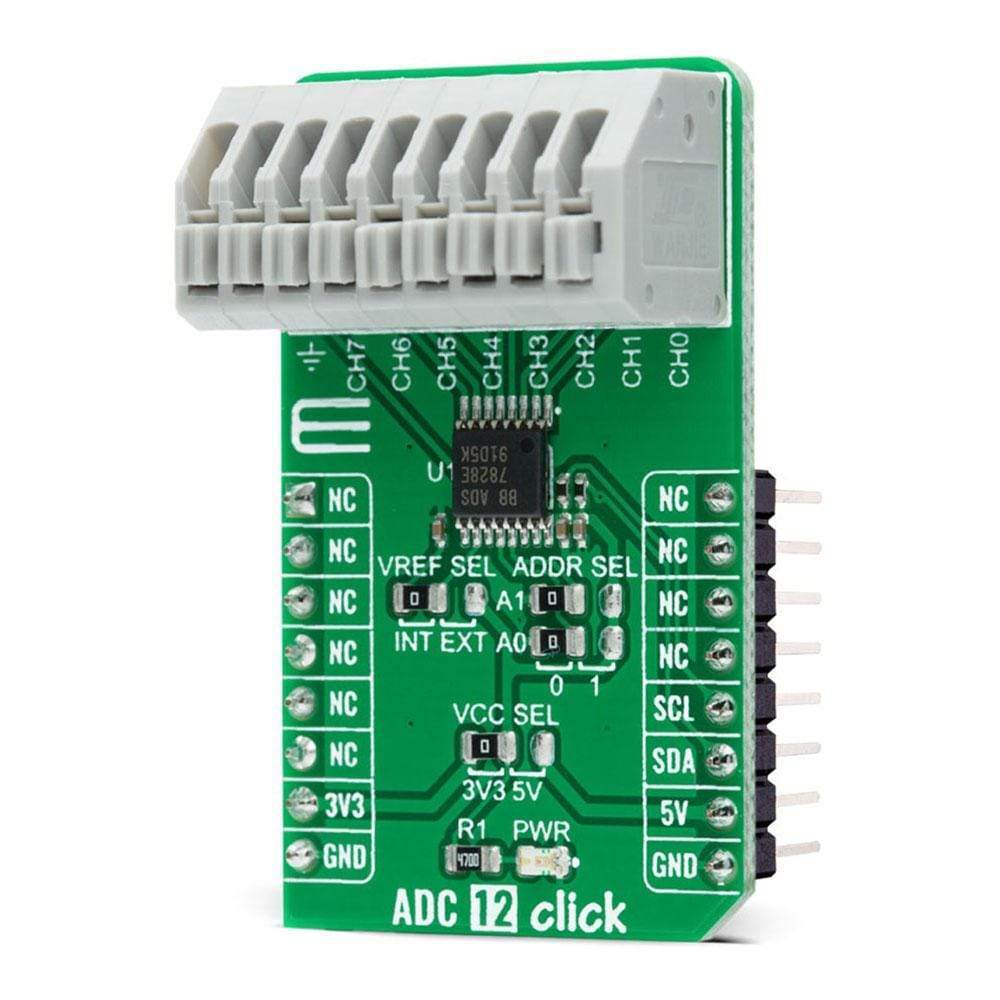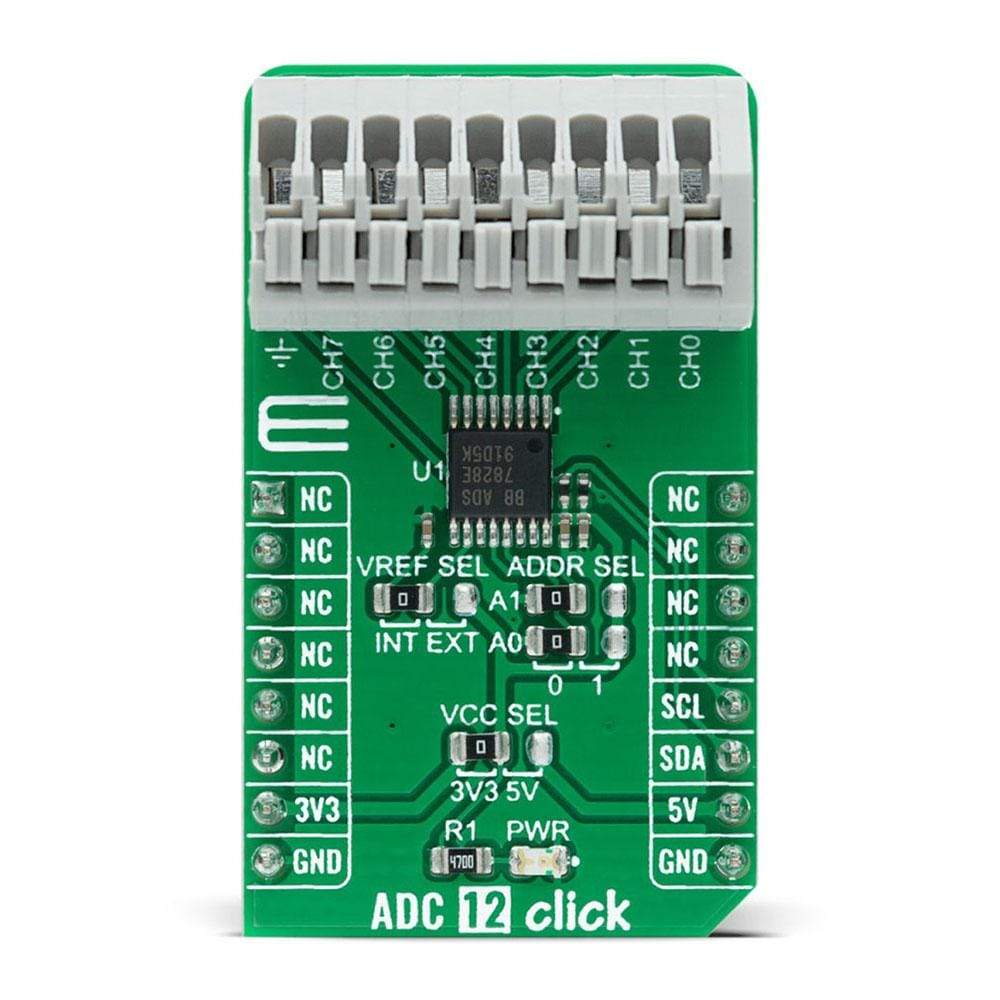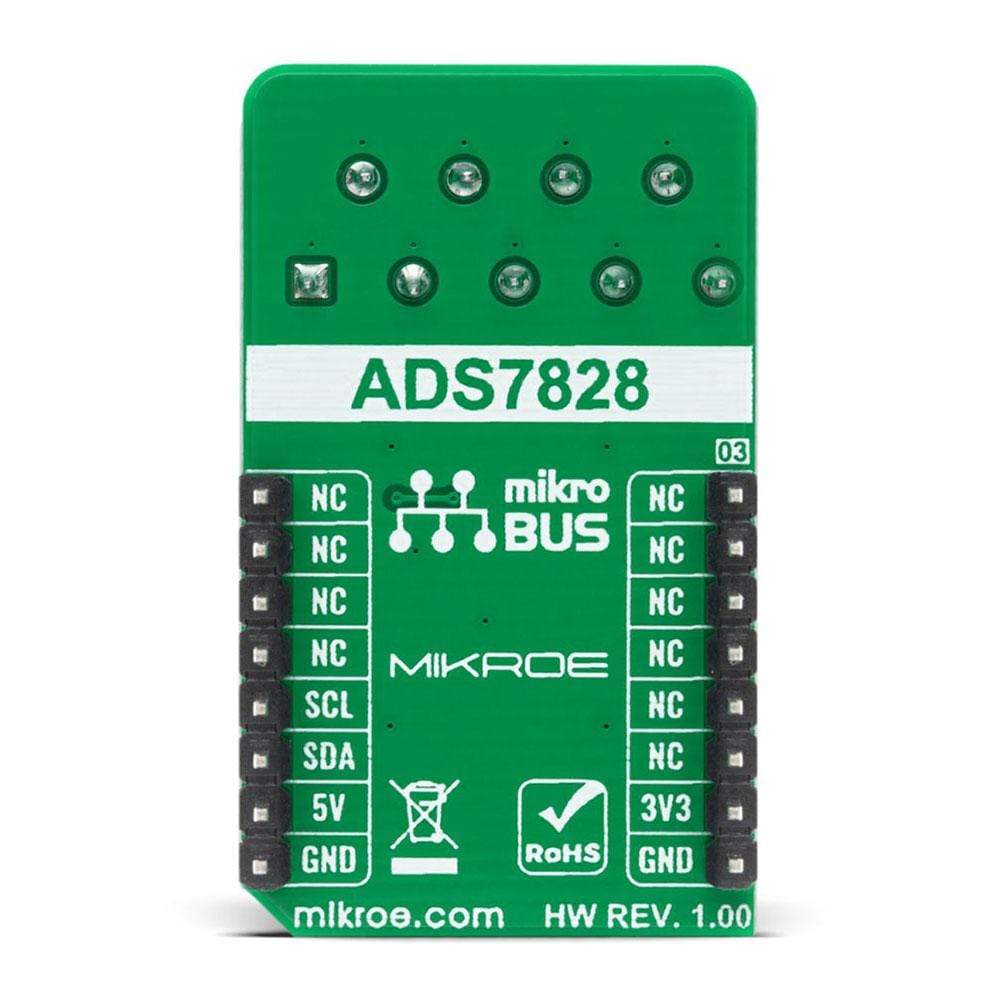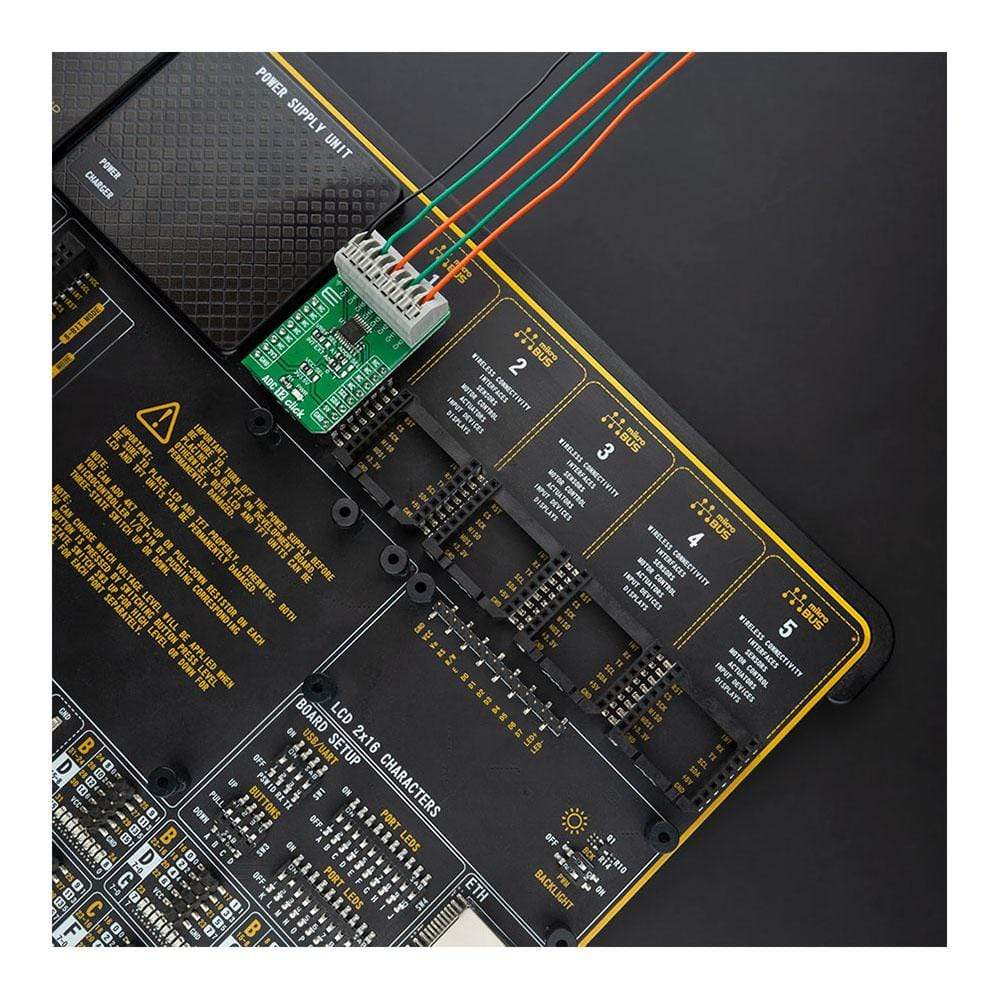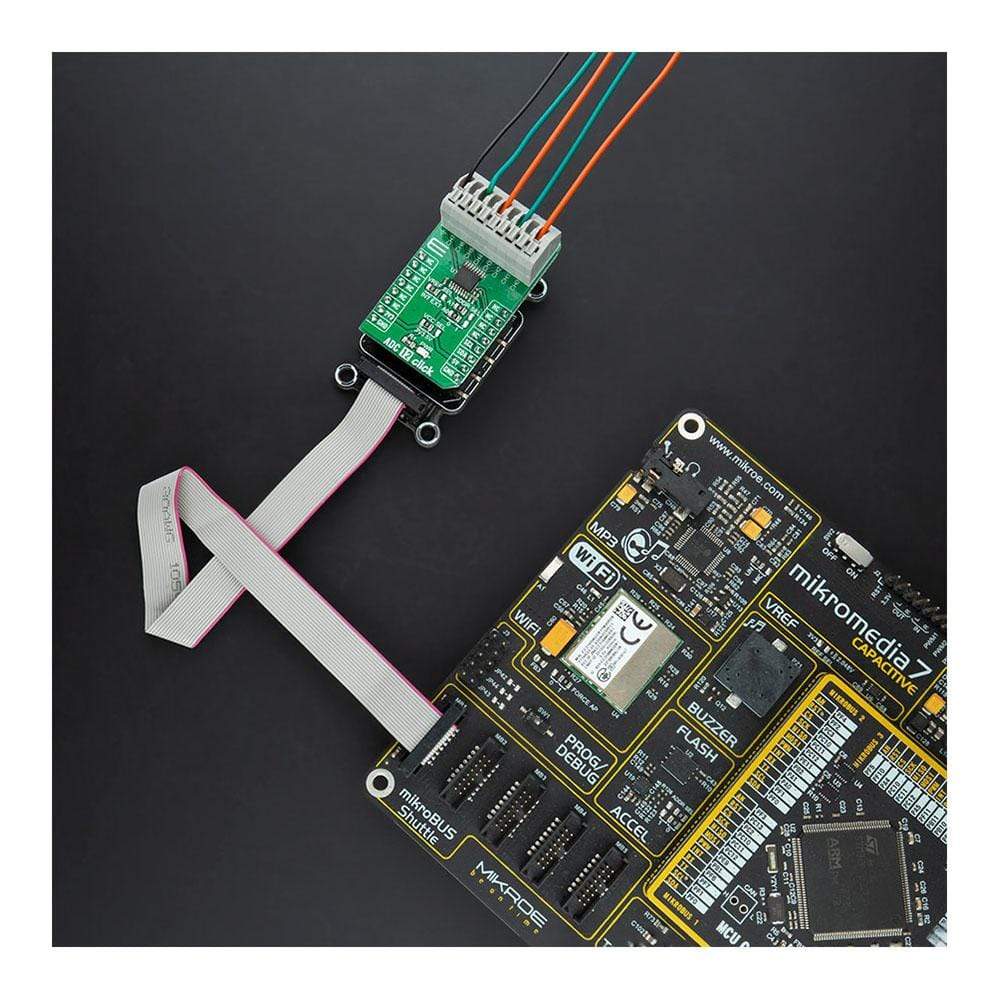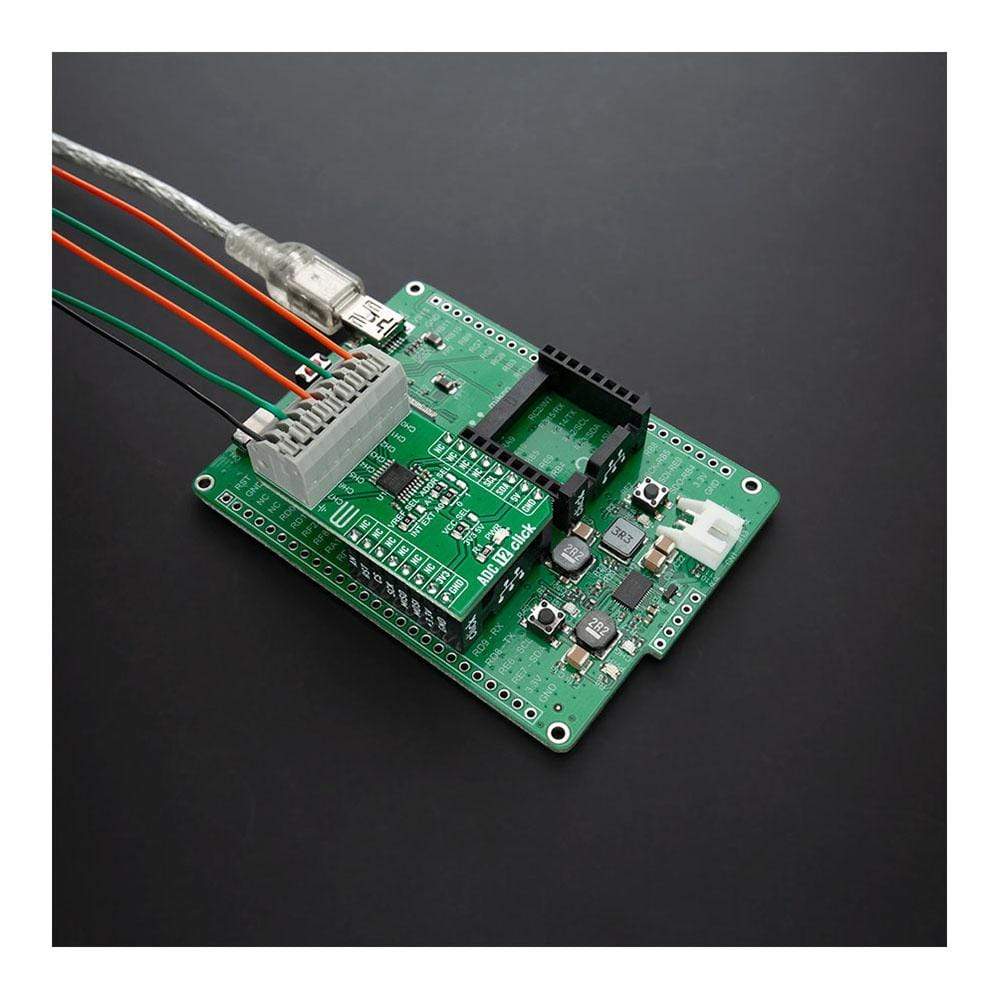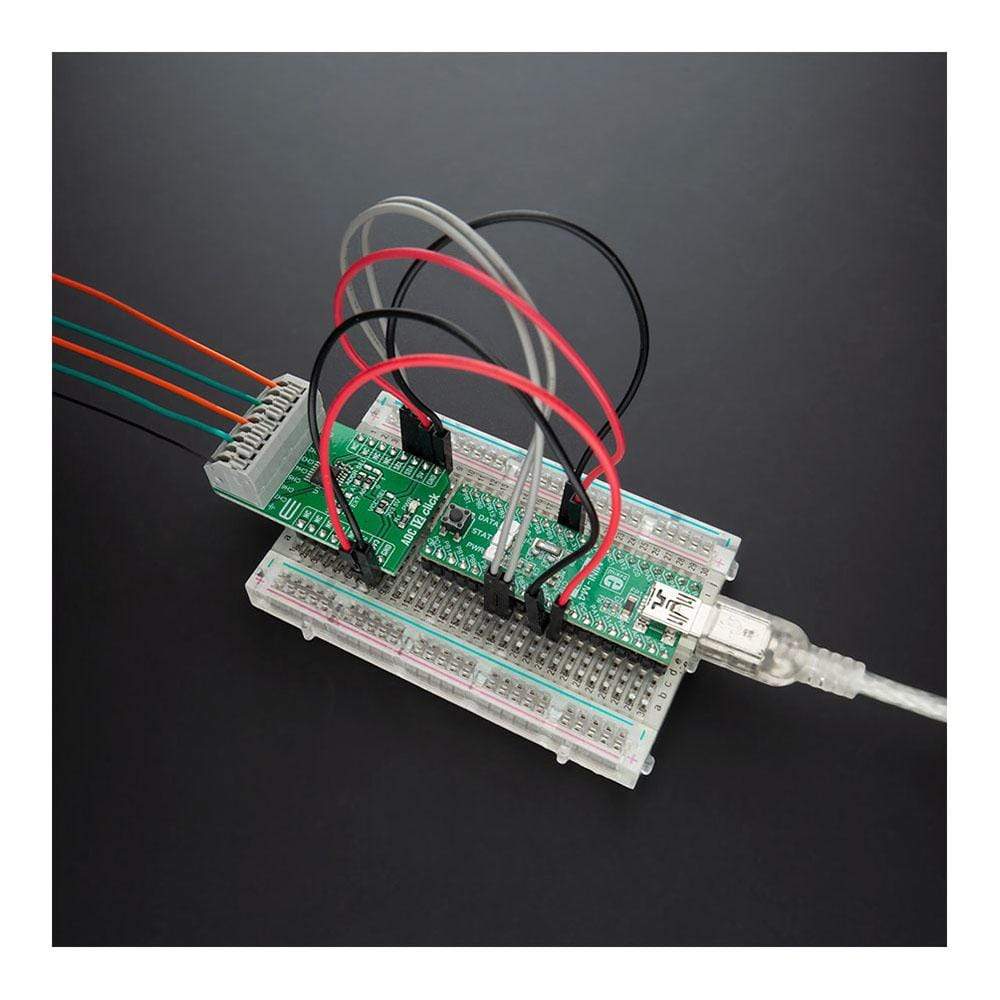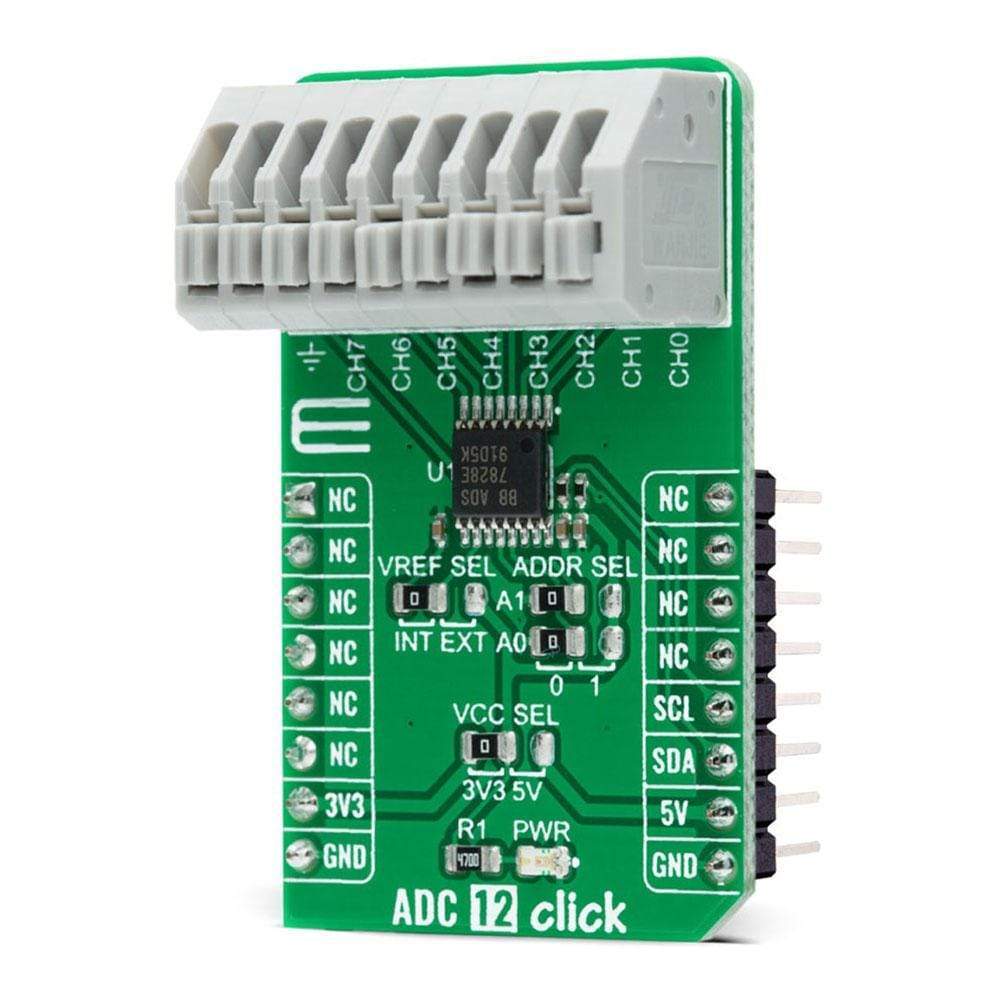
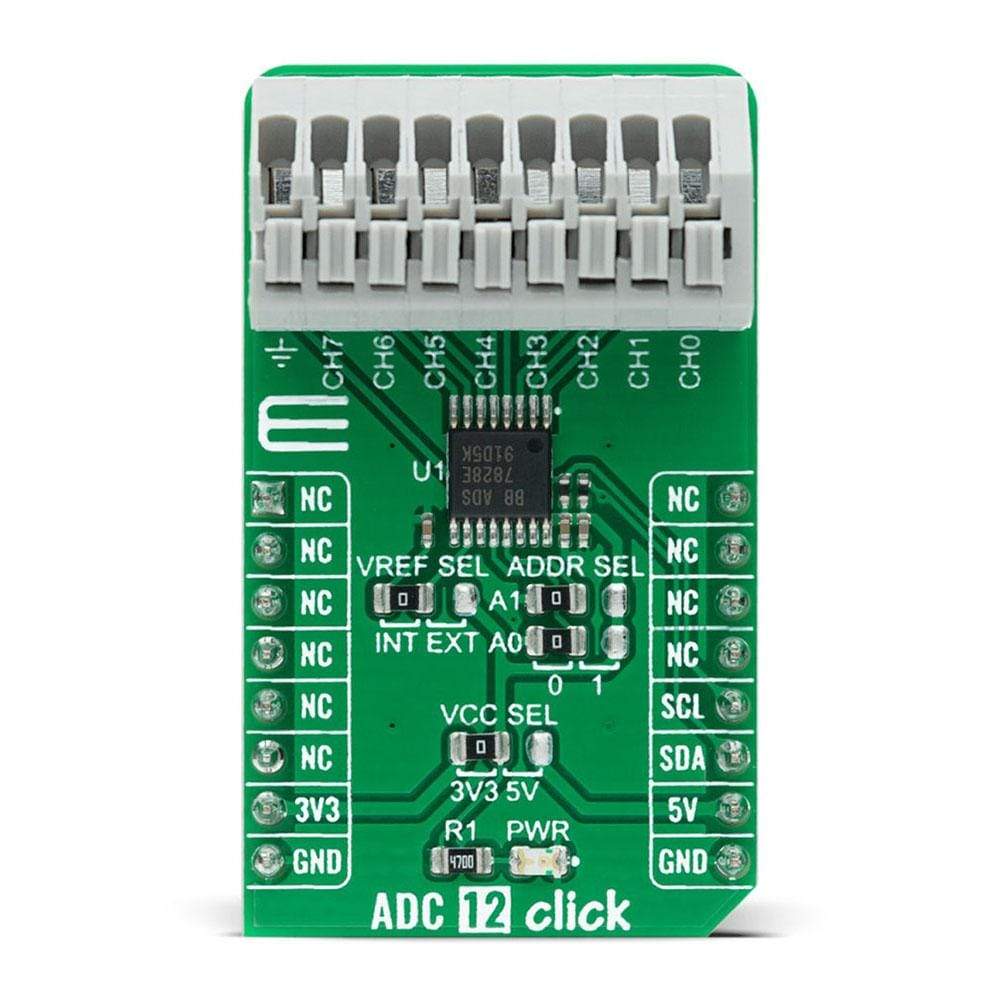
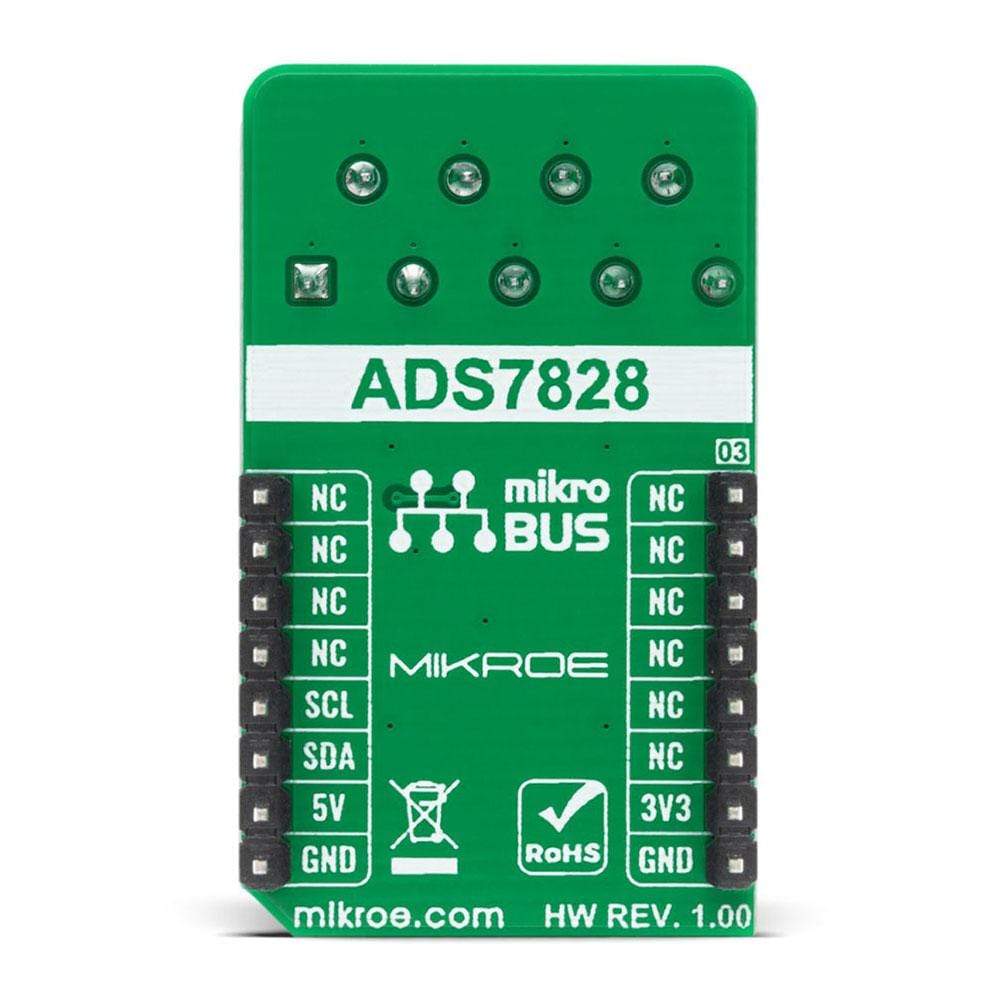
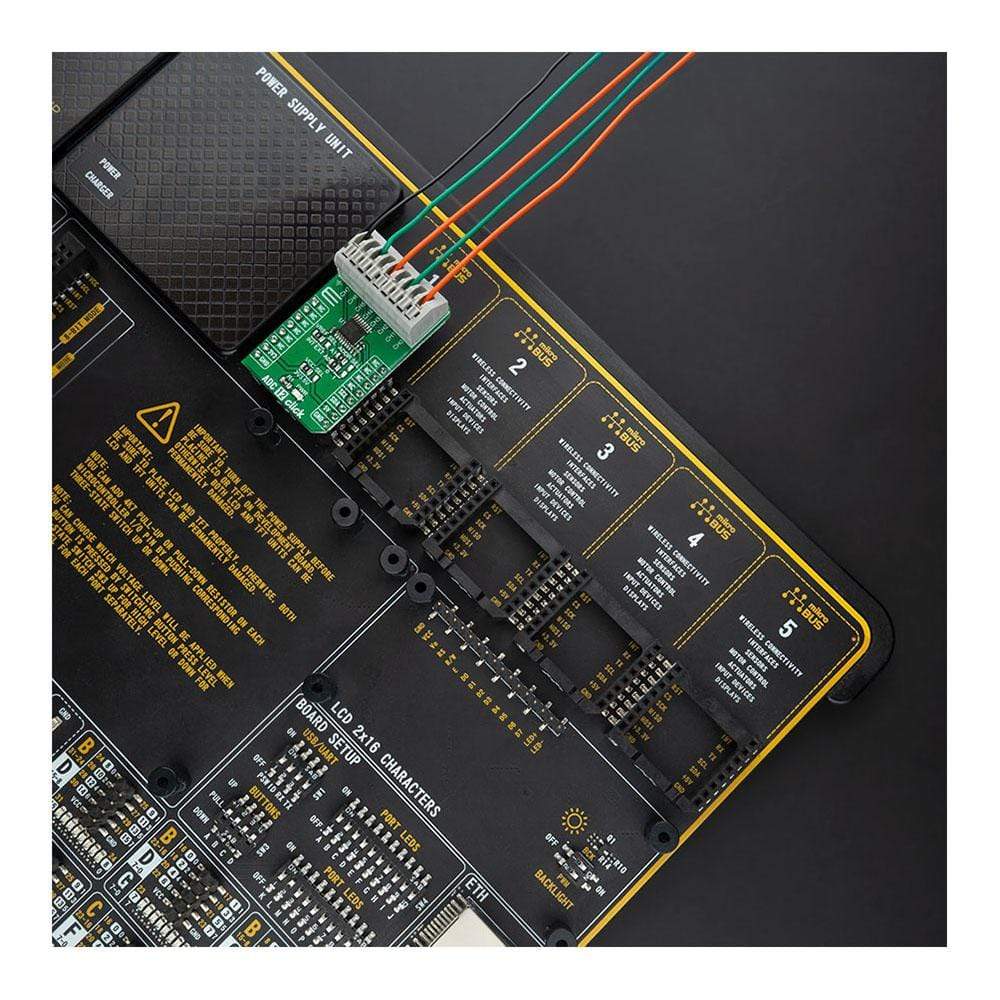
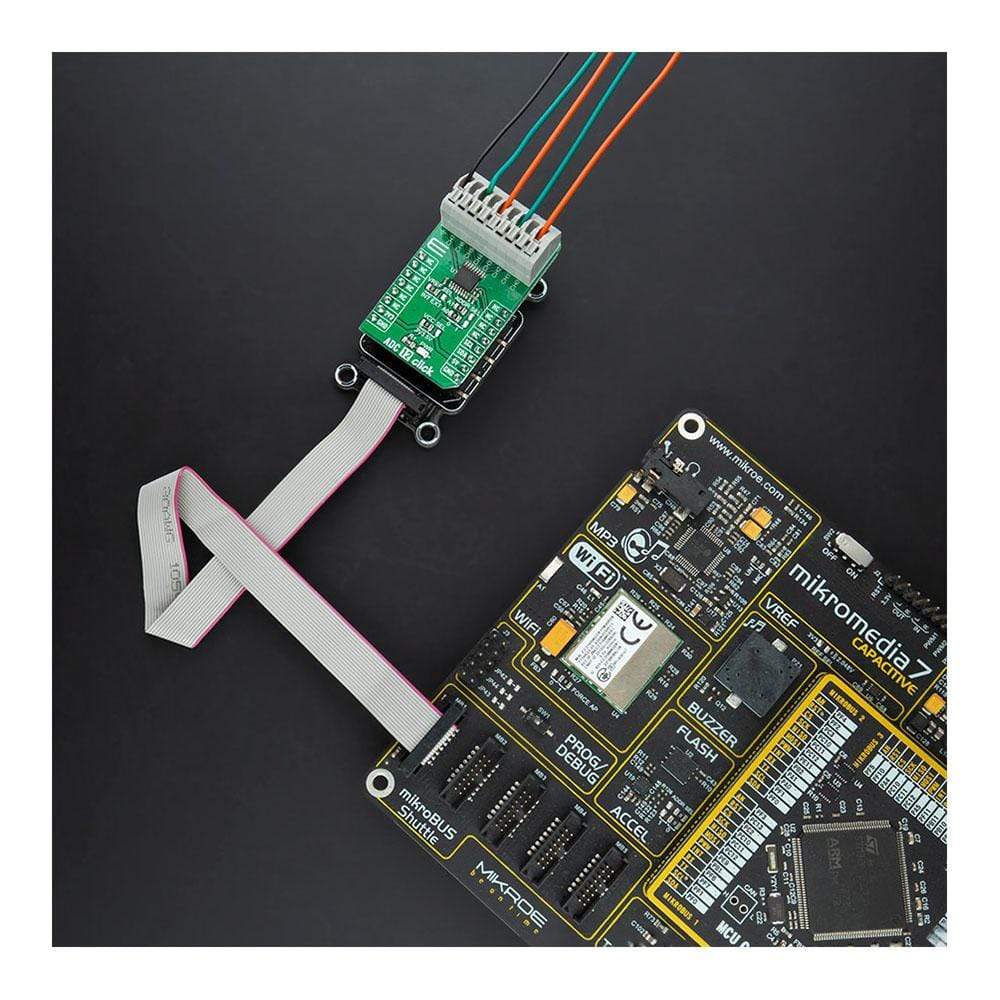
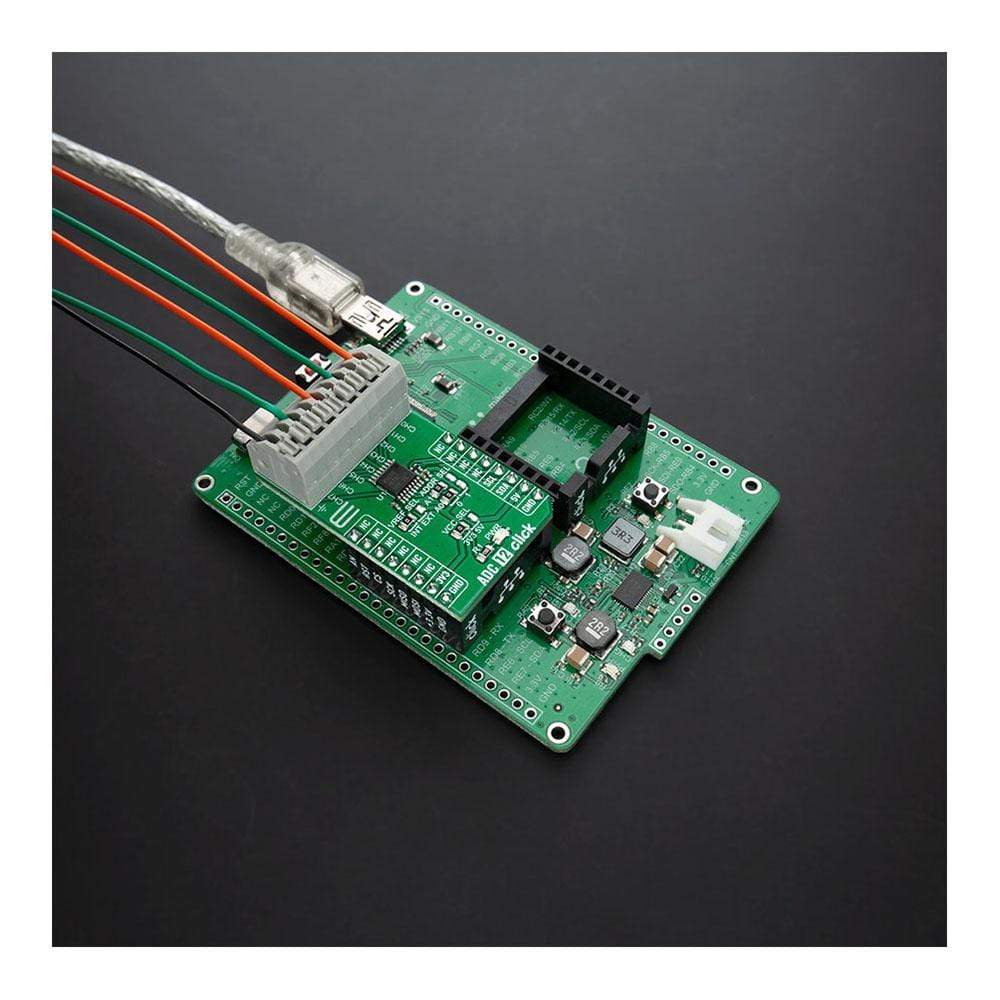
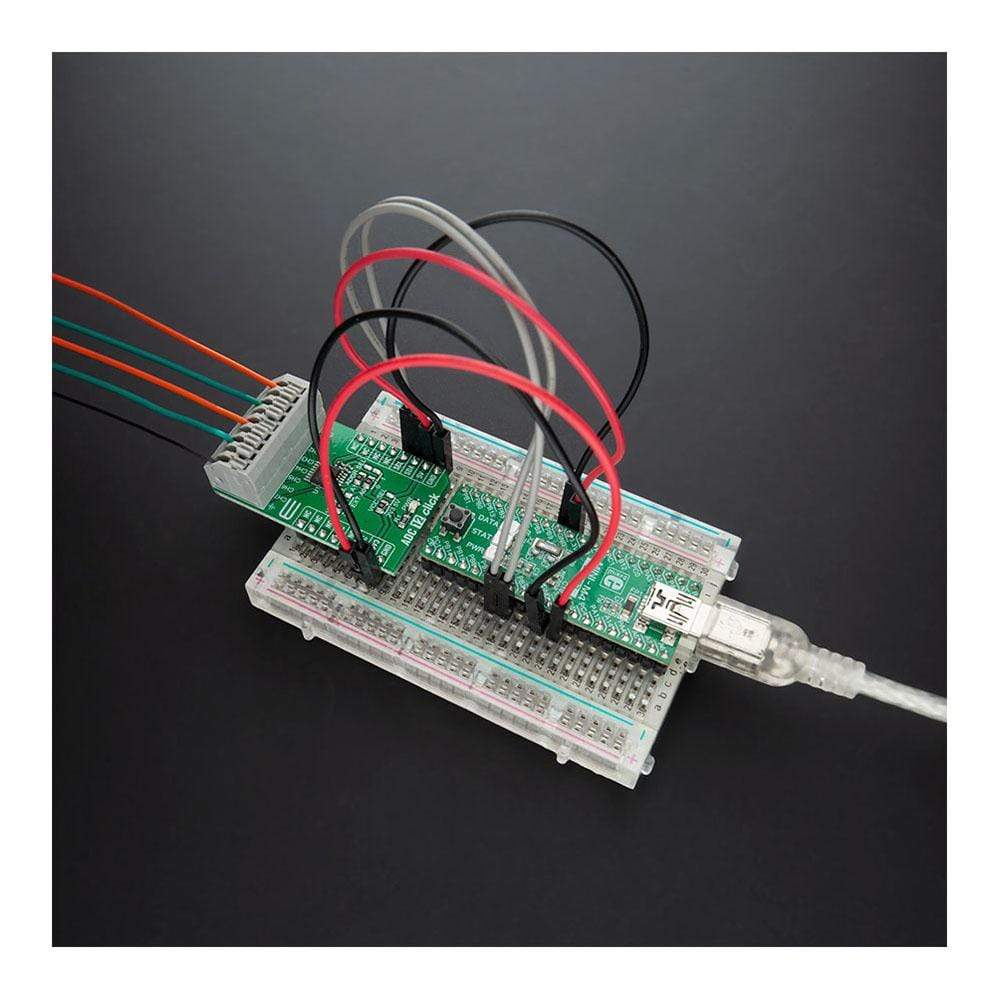
Key Features
Overview
The ADC 12 Click Board™ is a compact add-on board that contains a fully-featured, general-purpose analogue-to-digital converter. This board features the ADS7828, a low-power 12-bit data acquisition device that features a serial I2C interface and an 8-channel multiplexer from Texas Instruments. The A/D converter features a sample-and-hold amplifier and an internal, asynchronous clock. The combination of an I2C serial interface, up to eight differential analogue inputs, built-in reference with buffered output, and micro-power consumption makes this Click Board™ ideal for applications requiring the A/D converter to be close to the input source in remote locations and for applications requiring isolation.
The ADC 12 Click Board™ is supported by a mikroSDK compliant library, which includes functions that simplify software development. This Click Board™ comes as a fully tested product, ready to be used on a system equipped with the mikroBUS™ socket.
Downloads
L' ADC 12 Click Board™ est une carte complémentaire compacte qui contient un convertisseur analogique-numérique polyvalent et complet. Cette carte comprend l'ADS7828, un dispositif d'acquisition de données 12 bits à faible consommation doté d'une interface série I2C et d'un multiplexeur 8 canaux de Texas Instruments. Le convertisseur A/N comprend un amplificateur d'échantillonnage et de maintien et une horloge asynchrone interne. La combinaison d'une interface série I2C, jusqu'à huit entrées analogiques différentielles, une référence intégrée avec sortie tamponnée et une micro-consommation d'énergie rend cette Click Board™ idéale pour les applications nécessitant que le convertisseur A/N soit proche de la source d'entrée dans des emplacements distants et pour les applications nécessitant une isolation.
L' ADC 12 Click Board™ est pris en charge par une bibliothèque compatible mikroSDK, qui comprend des fonctions qui simplifient le développement logiciel. Cette Click Board™ est un produit entièrement testé, prêt à être utilisé sur un système équipé du socket mikroBUS™.
| General Information | |
|---|---|
Part Number (SKU) |
MIKROE-4376
|
Manufacturer |
|
| Physical and Mechanical | |
Weight |
0.027 kg
|
| Other | |
Country of Origin |
|
HS Code Customs Tariff code
|
|
EAN |
8606027381058
|
Warranty |
|
Frequently Asked Questions
Have a Question?
Be the first to ask a question about this.

